Warning: Undefined variable $k in /home/nginx/domains/wired2fishcom.bigscoots-staging.com/public/wp-content/themes/understrap-child-0.6.0/functions.php on line 984
Warning: Undefined variable $k in /home/nginx/domains/wired2fishcom.bigscoots-staging.com/public/wp-content/themes/understrap-child-0.6.0/functions.php on line 987
Fishing a floating worm has become somewhat of a lost art over the years. With the rise in popularity of the wacky rig, the weightless, Texas-rigged Trick worm has taken a bit of a back seat to its side-winding counterpart. Anglers shouldn’t sleep on this special worm though, but instead embrace it for the beautiful blend of power and finesse that it is.
Though there are few baits on the market more subtle than this, it can be used to cover far more water than something like a wacky rig. This combination of stealth and mobility makes a floating worm one of the best baits for fishing from the pre-spawn, through the spawn and even deep into the post-spawn.
Here’s a step by step approach to rigging and fishing a floating worm for the biggest bass.
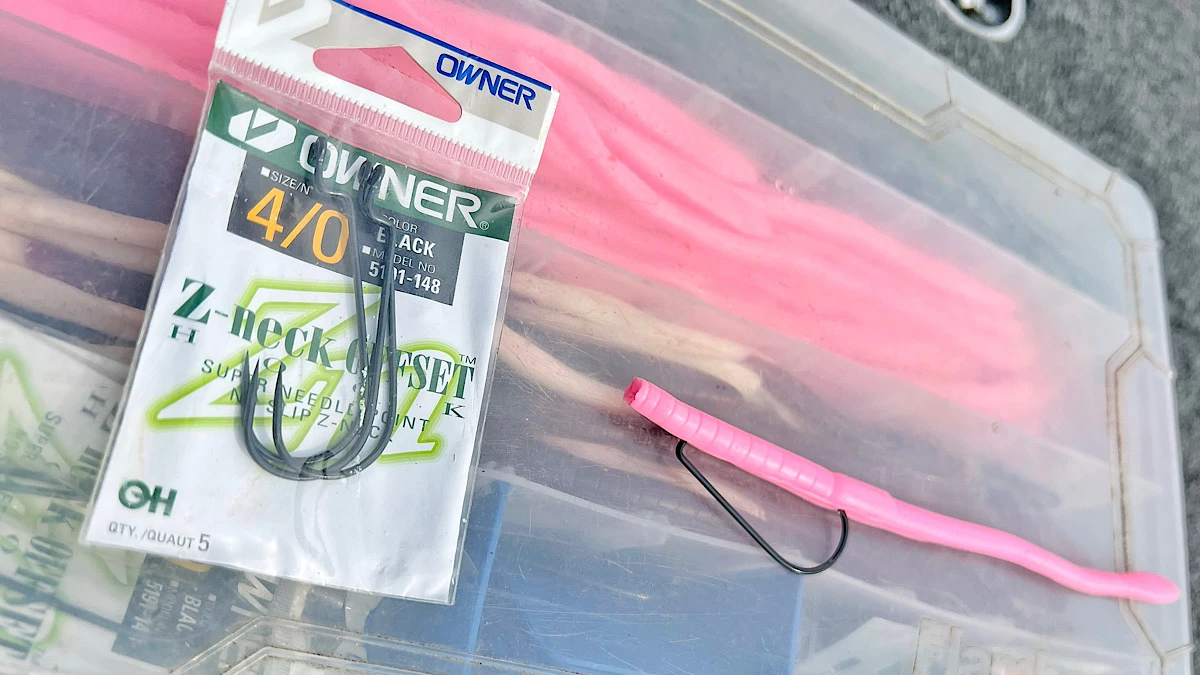
How to Rig a Floating Worm
One of the most simplistic baits to rig, a floating worm consists of only two things: a hook and a soft plastic trick style worm—basically a thin, long, straight-tail worm. The best hook to use for a floating worm is an offset worm hook in the 4/0 to 5/0 range. There are dozens of worms that will work well here, but something in the 6- to 8-inch range is ideal, with a slender and tapering body.
To rig a floating worm, start by simply tying on the hook. Then slip the hook point into the nose of the bait and then back out the underside of it about 1/4- to 1/2-inch down. Now slide the head of the worm all the way up the hook shaft until it covers the eye of the hook and the head of the worm rests snuggly above the bend of the hook.
Once you’ve done all of this, you’re ready to put the hook point back into the body of the bait to make the rig weedless. This can be a little tricky to get right and can take a little trial and error. What you want to do is bend the body of the worm slightly, then stick your hook through the underside of the worm and bring the point to just beneath the skin of the back of the bait.
If you did this correctly, the bait should then straighten out. If the bait is still bent, ease the hook out and try again, bending the bait less on the second attempt. Once you get the bait straight, you now have a weedless floating worm that’s ready of the water.
Recommended Floating Worm Hooks:
- Eagle Claw Round Bend Worm Hook
- BKK Basilisk Worm Hook
- Owner Offset Shank Wide Gap
- VMC Redline Series Hybrid Worm Hook
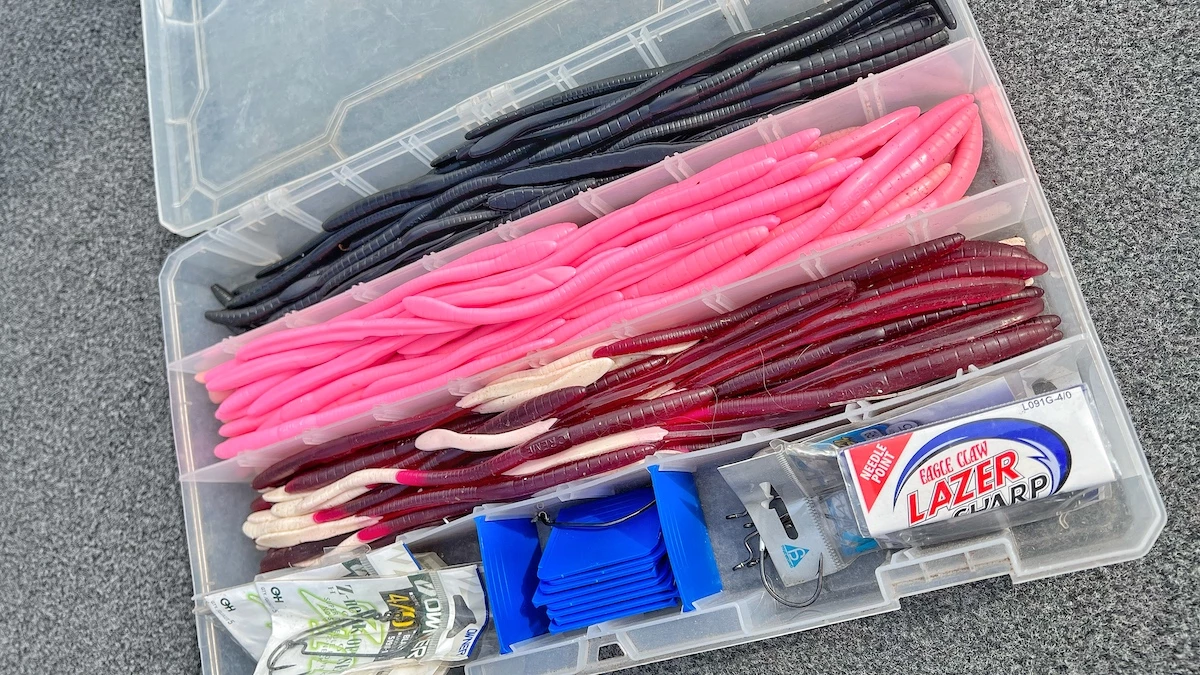
How to Fish a Floating Worm
To fish a floating worm, you’ll want to cast it out at or near cover and then gently but firmly twitch it along just under the surface. This will create a side-to-side walk the dog action like you’d expect to see out of topwater like a Spook or Sammy.
You can fish a floating worm along the surface like a topwater, or several feet below the surface once you get the hang of the cadence needed to make the bait walk. But I personally prefer to keep it within a couple feet of the surface so that I can visibly see the bait.
The reason being, the bass will often follow this bait and subtly suck it in. If you can’t see the bait, you likely won’t be able to see the fish and they’ll either suck it and blow it back out when they feel you or you’ll just take it away from one that might have eaten it given a couple more seconds.
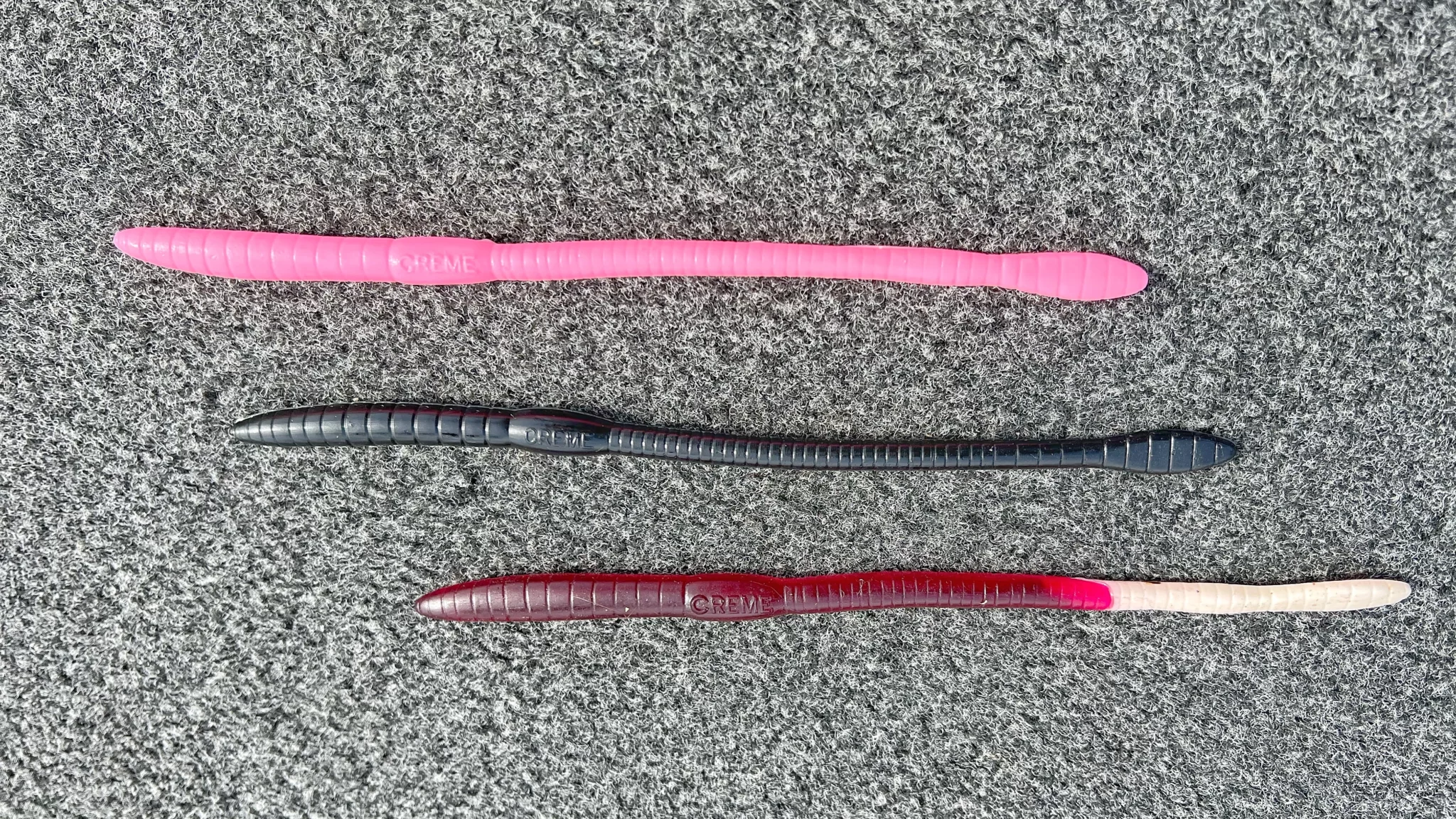
The Finesse and Power
A floating worm is the perfect combination of finesse and power, which is what makes it such a great bait throughout all phases of the spawn. As much as we talk about vibration being one of if not the biggest aid in attracting a bass, you’d be shocked at how much they do actually still rely on their vision to hunt.
No other bait makes this as evident as a floating worm does. This bait has a near non-existent sound signature in the water when it comes to putting off any kind of vibration, though I’ve had fish swim 10 feet or more at times to eat it. It’s an extremely subtle presentation, and yet still somehow has a power fishing feel to it as it works along the surface like a big topwater or glide bait. It has a very similar drawing power, with none of the commotion.
This, is what makes it so good around the spawn. Bass are big, they are shallow and they are hungry, but … they are also very finicky. So splashing a big bait right on top of their heads typically spooks them and they take off. This time of year, power fishing sometimes requires more finesse. And the floating worm is perfect for the job because you can gently lay it in the water near a piece of cover or even just past a bass that you can actually see.
Recommended Floating Worms
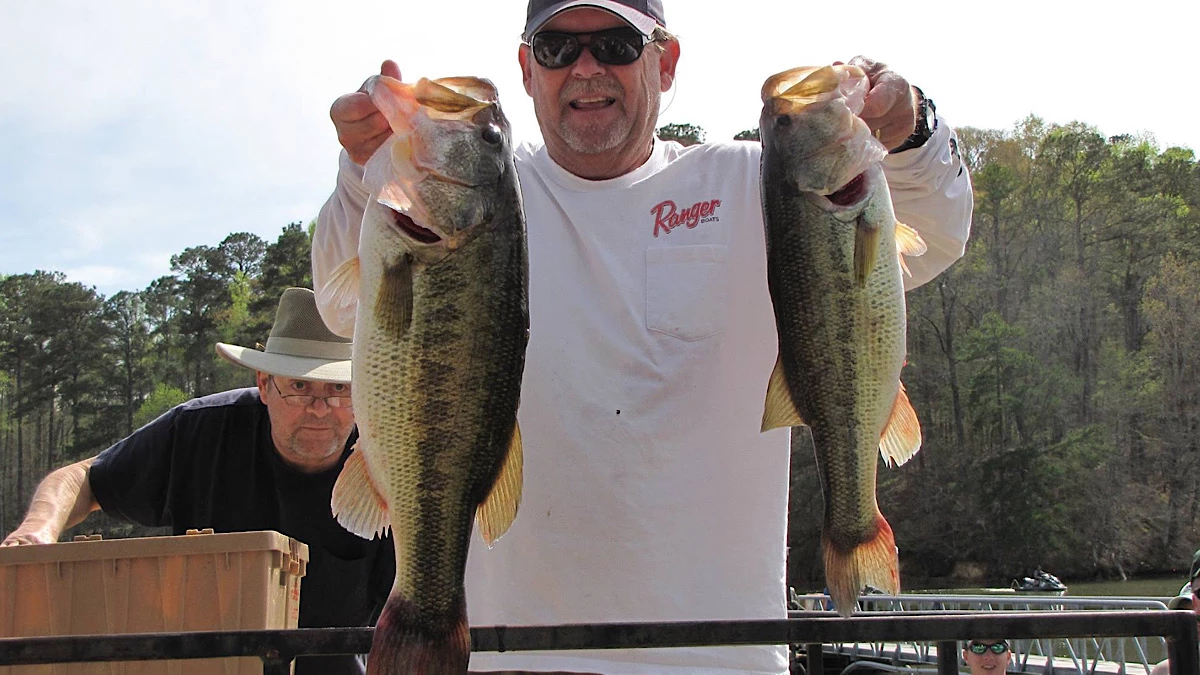
A Big Fish Bait
We’ve already alluded to this being a big fish bait, but I want to stress to you just how much so. My dad raised me on fishing a floating worm, and he and I have both caught a lot of big fish using this bait in all three phases of the spawn and in clear, stained and muddy water.
But none of those fish compare to the 10-pounder he caught on it in the spring of 2014. I was working a Bassmaster Elite Series event on Table Rock in Missouri when I got a frantic call from my dad who was fishing a tournament on our home lake of Lake Martin.
He had just landed what would soon become a new lake record on his trusty old floating worm. And proceeded to put together an astonishing 25- pound bag on a lake where 12- to 15- pounds wins most tournaments. A truly unbelievable day, the fish of a lifetime, and the majority of it coming by way of one of the biggest sleeper baits out there.
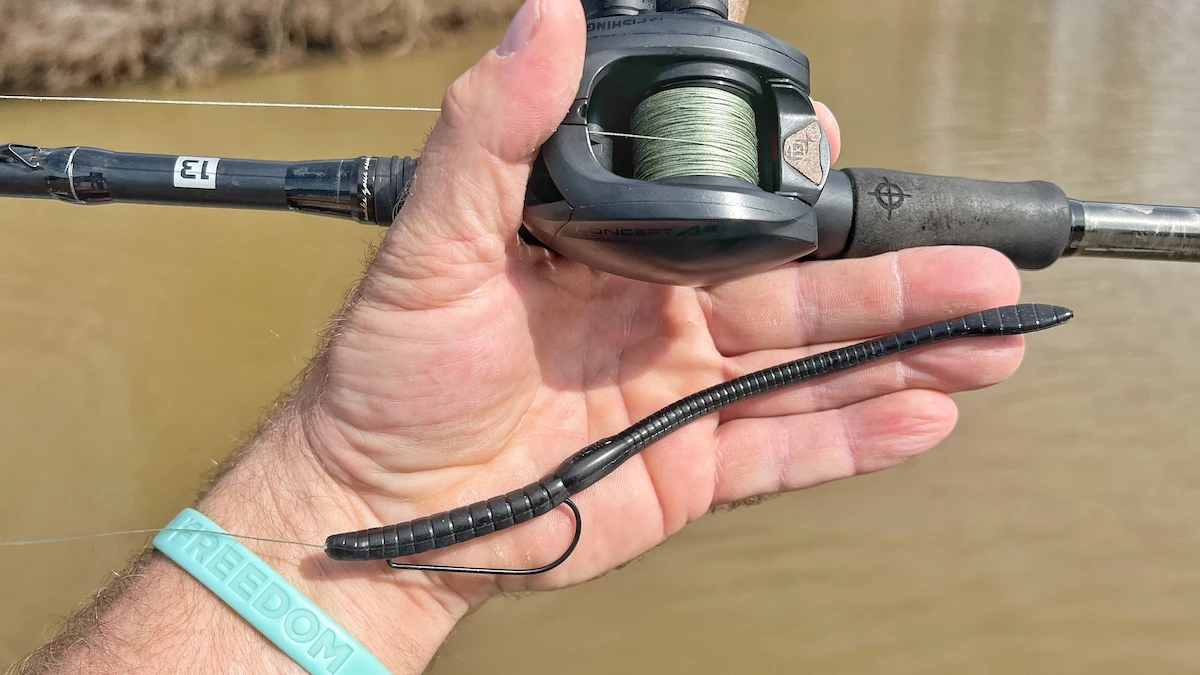
Max out the power
Though you can certainly fish a floating worm on the same spinning gear you use to fish a wacky rig, we like to up the ante a bit. Opting for a baitcaster spooled with 30- pound Sufix 832 braided line, there are very few bass that can’t be tamed when it hits one of our floating worms.
Using a baitcasting reel on a 7-0 medium heavy casting rod and braided line like this gives us the ability to still make long and accurate casts, but also the power we often need to fight a big fish out of sometimes thick cover. The braided line is hardly noticeable when fishing around vegetation, and can be repainted with a line marker once it begins to fade to decrease its visibility.
Hopefully this has piqued your interest in trying out a floating worm and opened your eyes to the possibilities of this technique. Ned rigs, shaky heads and Neko rigs often get lumped into one big pot of finesse fishing that gets a bad rap as a lesser style of fishing. Though that alone is an ill-advised practice, you certainly shouldn’t disregard a floating worm in the same manner.
This is one of the best baits to use to get big bites when bass are the most resistant to commit to anything else around the spawning season. You can cover water relatively quickly with this technique as opposed to other finesse tactics. And there’s nothing that has more drawing power for its size while still looking more natural than almost anything else you can fish with. You can cast it on the bank, drag it into the water on ultra shallow visible fish, you can skip it under trees and docks. You can even pitch it short casts. The alluring darting and disappearing action gives the bass an impossible performance to resist.
Give a floating worm a try this spring, and I’m fairly certain you’ll be glad you did.












